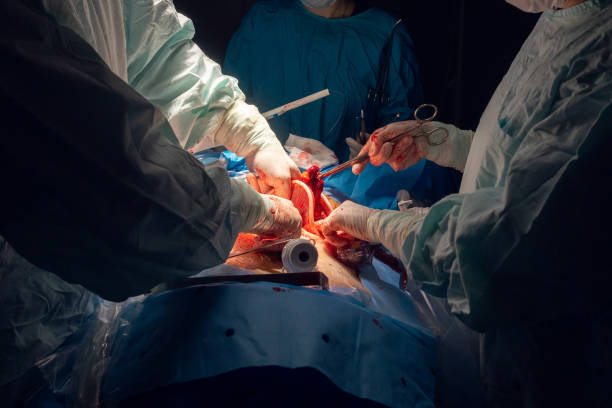Lipomas, those benign lumps lurking beneath your skin, can be more than just a cosmetic concern. They can cause discomfort, affect your self-esteem, and leave you wondering about your options. If you’re considering lipoma removal, you’re not alone. In this comprehensive guide, we’ll delve into everything you need to know about lipomas, the removal process, and what to expect on your journey to smoother skin.
Understanding Lipomas
What is a Lipoma?
A lipoma is a non-cancerous, soft tissue lump that forms just beneath the skin. It’s composed of fat cells and typically feels soft and movable when touched.
Why Do Lipomas Develop?
The exact cause of lipomas is often unknown. However, they tend to run in families and can develop at any age.
When Should You Consider Lipoma Removal?
Lipomas, those benign fatty lumps that develop beneath the skin, are typically harmless. However, there are specific situations when you might want to consider removing them:
1. Cosmetic Concerns:
One of the primary reasons people opt for lipoma removal is cosmetic concerns. Lipomas can vary in size, and if they are visible and affect your appearance, they may lead to self-consciousness and reduced self-esteem.
For example, a lipoma on a visible area like the face, neck, or arms can draw attention and make you feel uncomfortable. In such cases, removing the lipoma can help restore your confidence and improve your overall appearance.
2. Discomfort or Pain:
While lipomas are typically painless, larger lipomas or those located in sensitive areas can cause discomfort or even mild pain. The pressure exerted by a lipoma on surrounding tissues can lead to aching or discomfort, especially when it comes into contact with nerves or muscles.
If you find that your lipoma is causing you discomfort or pain that affects your daily life or activities, it may be a compelling reason to consider removal.
3. Functional Impairment:
Although it’s relatively rare, some lipomas can grow to a size where they interfere with your movement or functionality. For instance, a lipoma located in the armpit might limit your arm’s range of motion. In such cases, removal can restore proper function and comfort.
4. Uncertainty:
In some cases, people may not be sure whether a lump is a lipoma or another type of growth. If you’re uncertain about the nature of a lump, it’s essential to consult a healthcare professional for a proper diagnosis. If it is indeed a lipoma and it’s causing any of the above concerns, you might decide to remove it for peace of mind.
Lipoma Removal Methods
Surgical Excision
How Does Surgical Excision Work?
In surgical excision, a surgeon makes a small incision, removes the lipoma, and stitches up the wound.
Suitable for: Larger lipomas or those that require a definitive diagnosis.
Liposuction
How Does Liposuction Work?
Liposuction involves using a thin tube and suction to remove the fatty tissue from the lipoma.
Suitable for: Smaller, softer lipomas.
Steroid Injections
How Do Steroid Injections Work?
Steroid injections can shrink the lipoma over time by injecting steroids directly into it.
Suitable for: Smaller lipomas or those who prefer non-surgical options.
Preparing for Lipoma Removal
Before undergoing lipoma removal, proper preparation is essential to ensure a smooth and successful procedure. Here are the steps you should take:
1. Consultation with a Healthcare Professional
The first and most crucial step in preparing for lipoma removal is to schedule a consultation with a healthcare professional. This consultation serves several important purposes:
- Assessment: During the consultation, the healthcare provider will assess the lipoma’s size, location, and characteristics. This assessment helps determine the most appropriate method for removal.
- Medical History: You should be prepared to provide your complete medical history during the consultation. Inform the healthcare provider about any existing medical conditions, allergies, or medications you are currently taking. This information is crucial to ensure your safety during the procedure.
- Discussion of Goals: Use the consultation as an opportunity to discuss your goals and expectations for the procedure. Be clear about why you want the lipoma removed and what outcomes you hope to achieve.
2. Choosing the Removal Method
Based on the assessment and your discussion with the healthcare provider, a decision will be made regarding the most suitable method for lipoma removal. Common methods include surgical excision, liposuction, or steroid injections. Each method has its advantages and considerations, so the choice will depend on factors such as the lipoma’s size, location, and your preferences.
3. Pre-Procedure Instructions
Once the removal method is selected, your healthcare provider will provide you with specific pre-procedure instructions. These instructions may include:
- Fasting: Depending on the type of anesthesia used, you may need to fast for a certain period before the procedure. Your healthcare provider will provide clear guidelines on when to stop eating and drinking.
- Medication: Your healthcare provider may instruct you to temporarily stop taking certain medications or supplements that could increase the risk of bleeding. Follow these instructions carefully.
- Skin Preparation: Ensure the area around the lipoma is clean and free from any lotions, creams, or makeup on the day of the procedure.
- Arrangements: Plan for transportation to and from the medical facility if you’ll be receiving anesthesia. You may not be able to drive immediately after the procedure.
4. Emotional Preparation
Lipoma removal is a minor surgical procedure, but it’s natural to feel some anxiety or nervousness before any medical intervention. Take some time to mentally prepare yourself for the procedure:
- Ask Questions: If you have any concerns or questions about the procedure, don’t hesitate to ask your healthcare provider. Understanding the process and what to expect can alleviate anxiety.
- Support System: Consider having a friend or family member accompany you on the day of the procedure for emotional support and assistance with transportation.
- Relaxation Techniques: Practice relaxation techniques, such as deep breathing or meditation, to help calm your nerves.
5. Post-Procedure Planning
Before the procedure, it’s a good idea to make arrangements for your post-operative care:
- Recovery Time: Depending on the removal method, you may need some downtime for recovery. Arrange for time off work or other obligations as needed.
- Follow-up Appointments: Ensure that you schedule any necessary follow-up appointments with your healthcare provider to monitor the healing process.
The Lipoma Removal Procedure
Anesthesia: Depending on the method chosen, you may receive local anesthesia or general anesthesia.
Procedure: The lipoma removal procedure will vary based on the selected method, as described earlier.
Recovery and Aftercare
Pain and Swelling: You may experience some pain and swelling after the procedure, which is usually managed with over-the-counter pain relievers.
Stitches: If surgical excision is performed, stitches will need to be removed within a week or two.
Is Lipoma Removal Safe?
Lipoma removal is generally safe when performed by a qualified healthcare professional. Complications are rare, and the procedure is typically well-tolerated.
Lipoma Removal Cost
The cost of lipoma removal varies depending on factors like the size of the lipoma, the removal method, and your location. Generally, it is considered a minor surgical procedure.
Lipoma Removal: Before and After
Before undergoing lipoma removal, it’s crucial to discuss your expectations and possible outcomes with your healthcare provider. After removal, most individuals experience relief from discomfort and improved self-confidence.
Conclusion
Lipoma removal can provide relief from discomfort and improve your quality of life if you’re bothered by these benign lumps. Consult with a healthcare professional to discuss your specific case and determine the most suitable removal method for you. With the right guidance, you can embark on a journey to smoother and more comfortable skin.



